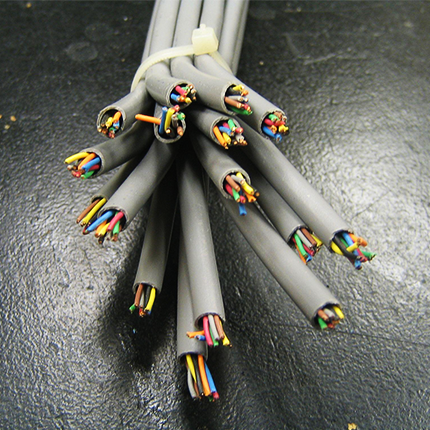Recently in Spain we have suffered a complete power outage, with no electricity for a long time. Some were able to have power on their computers with generators, solar panels, etc. And I know you can have data connectivity with SDR or HAM radio. But my question here is, what are some good self-host/local offline software that we can have and use for when something like this happens. I know kiwix, and some other for manuals. Please feel free to share the ones you know and love, can be for any type of thing as long as it works completely offline, just name it. Of course for GNU/Linux (using Arch myself BTW). Thanks in advance.
I have my homeserver rsync three Arch mirrors and three Arch ARM mirrors in rotation on three days every week. Thus I have full local repos for these. All my machines are configured to use this local repo. The reason I do this is precisely to be prepared for the inevitable ‘Internet is broken’ scenario.
Yeah, some people don’t like to run with full repo mirrors but keep updated copies of the Debian ISO that can be mounted as repositories at any point:
- https://tadeubento.com/2023/debian-iso-downloads-and-offline-archives/
- https://tadeubento.com/2023/debian-iso-images-as-apt-repositories/
It’s essentially the same, but in another format.
One can also use a cache to hold deb and rpm files requested by the machines. (Works great when running hundreds of systems.)
I like “apt-cacher-ng”. It will do deb and rpm. https://wiki.debian.org/AptCacherNg
https://www.unix-ag.uni-kl.de/~bloch/acng/
Edit: better link
Caches expire, eventually.
Apt-cacher-ng doesn’t tend to expire automatically. It can be configured to keep the last version regardless. https://www.unix-ag.uni-kl.de/~bloch/acng/html/maint.html#extrakeep
Since this has seen some interest – here’s how much disk space this opulence costs: Arch x86 repository is 113 Gb and Arch ARM is 123 Gb :)
That’s actually much smaller than I expected.
good one thanks, will RTFM for this
total respect
There is the kiwix hotspot.
A WiFi hotspot that gives you access to the entire Wikipedia, medical information, homesteading books …
thanks, will crosspost there. I didn’t saw that one
also !selfhosted@lemmy.world (most active) and !selfhosting@slrpnk.net (less active)
Downloading all of wikipedia for one language is abiut 90GB. Inhave it on a spare drive in case of an outage. That way if I need to research something I can still do.
Doesn’t Kiwix already do this? Or is there any advantage in doing it myself?
I guess the advantage would be to have a more updated copy, because the ones on kiwix are one year old.
No idea what kiwix is.
I said it in the post https://kiwix.org/en/
You can put together a media server and build a catalogue so you can watch movies and series offline. Maybe not a huge priority in that situation but definitely nice to have.
Jellyfin is a good option for streaming from a media server to other devices. The *arr suite is an option for building the catalogue.
yes, thanks. I already have a server here with Jellyfin, but I recently moved to a new house and have to put it all back again
This is going to be controversial but…
Linux is not really suited for the post-apocalitic no-internet world, the way the repositories are built and software is packed (almost nothing is static, a lot of dependencies on other packages everywhere) just makes it really impractical and hard to deal with those scenarios. Flatpak / containers and friends even make this situation worse because you can’t easily mirror the repositories and there’s no straightforward way of exporting a Flatpak as a solid file that can be shared around and installed everywhere - the current tool for that doesn’t account architectures and dependencies very well.
Windows however is a much more solid and good option, yes, it’s painful to hear this but in Windows you can get an exe from a friend in a flash drive and it runs as is. Same goes for installers, reinstalling the OS etc. There’s only a couple of .net framework installers that will cover dependencies for 99.99% of stuff in a few MB. The same goes for macOS, however it depends on a lot of software signing nowadays and certificates that can expire and you then have a problem.
There are ways to deal with this. There’s AppImage for GUI apps (that replicates the “just get an exe from a friend on a flash drive”) and lots of bundling programs for non-GUI apps (I use
nix-bundlebecause I use Nix, but there are other options too).Lots of distro installers work offline too, by just bringing all the stuff you need as part of the installer.
And one major benefit of Linux is that when stuff does inevitably go wrong, it’s infinitely easier to fix than proprietary garbage.
(one advantage of Flatpaks over AppImage is Flatpaks bundle their libraries – most AppImages won’t run on musl libc systems)
AppImage suffers from the same problem that Flatpak does, the tool do work offline aren’t really good/solid and won’t save you for sure. It also requires a bunch of very small details to all align and be correct for things to work out.
Imagine the post-apocalyptic scenario, if you’re missing a dependency to get something running, or a driver, or something specific of your architecture that wasn’t deployed by the friend alongside the AppImage / Flatpak (ie. GPU driver) you’re cooked. Meanwhile on Windows it has basic GPU drivers for the entire OS bakes in, or you can probably fish around for an installer as fix the problem. It is way more likely that you’ll find machines with Windows and windows drivers / installer than Linux ones with your very specific hardware configuration.
AppImage suffers from the same problem that Flatpak does, the tool do work offline aren’t really good/solid and won’t save you for sure
I’ve been using my laptop in areas without internet for days. It works fine.
It also requires a bunch of very small details to all align and be correct for things to work out.
I have
appimage-runfrom nixpkgs installed, which handles all those details. They are also not too hard to figure out manually should you need to.Imagine the post-apocalyptic scenario, if you’re missing a dependency to get something running, or a driver, or something specific of your architecture that wasn’t deployed by the friend alongside the AppImage / Flatpak (ie. GPU driver) you’re cooked.
GPU drivers are emphatically not part of the AppImage. They are provided by Mesa, which is almost guaranteed to be installed.
Meanwhile on Windows it has basic GPU drivers for the entire OS bakes in, or you can probably fish around for an installer as fix the problem
It’s actually the other way around - if you want your GPU to work properly on a new Windows install, you have to fish around for AMD/NVidia drivers. On Linux Mesa is pretty much pre-installed on all distros.
It is way more likely that you’ll find machines with Windows and windows drivers / installer than Linux ones with your very specific hardware configuration.
LMAO, try moving a windows installation from Ryzen+AMD GPU to Intel+NVidia GPU and let me know how it goes (hint: you will have to manually uninstall, and then install a shit ton of drivers, for which you will need internet).
Meanwhile I’m typing this from a (Ryzen+AMD GPU) desktop which has an SSD from my (Intel+integrated graphics) laptop. When I plugged it in, it booted into sway just fine, with complete GPU support and all, and the only reason I had to update my config is to make it more convenient to use on the desktop.
Linux is not the best “apocalypse” OS, but it sure is better than Windows.
Meanwhile on Windows it has basic GPU drivers for the entire OS bakes in,
Wut? Linux bundles drivers for tons of things out-of-the-box literally built as part of the kernel and many distros (e.g. Pop_OS) even provide NVidia drivers out-of-the-box as well.
That’s why similar to windows you would need to be prepared beforehand, I have a thumbtick with my portable appimages so when I setup new computers I can open my notes etc without internet.
Meanwhile on Windows it has basic GPU drivers for the entire OS bakes in
this is not true, in fact, most of the machines I have here won’t work with a Windows installer .iso or Windows OS itself and some of my hw don’t even have drivers for it. So yeah no
meanwhile, most GNU/Linux .iso distro installers have drivers already on the .iso itself, including propietary ones
(one of the older tropes in Linux-land is giving new life to old hardware just by replacing Windows with Linux)
Did you ever see any fresh install of Windows not be able to display at least 800x600 on any GPU? You didn’t. It works to the minimum, want more, sure grab an msi and install the drivers.
why do that when I have the proper drivers already on my usual GNU/Linux distro of choice? and can even use as live environment, don’t even need to install (in Windows this is not easy to do)
and can even use as live environment, don’t even need to install (in Windows this is not easy to do)
Not true, Rufus creates bootable and persistent USB flash drives with one checkbox. You can do it manually also.
I was trying to illustrate a point, you may have your distro, your packages and what think you need, but if we’re talking about post-apocalyptic you’ll probably need other stuff and at that point you have windows computers and windows software installed or installers available pretty much everywhere starting with your next door neighbor and with Linux not so much.
Offline repository caches for Linux have been a thing for decades. People absolutely pass binaries to friends.
Flatpac may not be suitable, but that is only one way to get software on Linux.
I’m not saying it is impossible, I’m just saying you need a deal with a bunch of complexities that in the post-apocalyptic wont be pretty.
might be true, i won’t discuss that. But im willing to have alternatives, have my own mirrors etc whatever is needed
what I’m not willing to use is propietary software so more than controversial, you are just not being helpfull
you are just not being helpfull
I am. When “shit hits the fan” you want to be as compatible and and frictionless as possible, because at point having a running computer will be a feat on its own and you probably won’t have time/power to deal with software complexities and “ways around issues”. You most likely want to boot a machine from whatever parts are available and get some data out of it or maybe in and move on to hunting or farming. No time to be there fixing xyz package with broken dependencies and whatnot. If someone gives you a flash drive with data it follows the same logic, you want to get to something as quickly as possible.
In Linux there’s also an over-reliance on web-based solutions that can be self-hosted in your system or a 3rd one but that, once again, just adds extra friction that you don’t have with “simple” formats and binaries like pdf, docx and others that at the end of the day are just self contained apps that can be run as is without extra fuzz nor cloud dependencies.
I’m all for Linux, alternative and open-source, but in the situation described you last concern is if you’re running proprietary stuff.
deleted by creator
Meshtastic
Also Reticulum Network Stack! Much more ambitious than Meshtastic.
doesn’t this one needs a specific set of hardware? is it affordable here in Europe? thanks for sharing, I have heard of this for a long time but didn’t get onto it, might look now that this happened
Yes, it requires hardware
@iii @6R1MR34P3R Depends on how good of a setup you want, but you can start for less than €50.
im willing to pay up to €100 more or less
can you recommend a kit or just works hardware for meshtastic?
@6R1MR34P3R Some of the LILYGO devices are great for use straight out of the box. I have a T-Echo as my portable device, the T-Deck Plus is also an option if you want something completely stand-alone rather than controlled over Bluetooth or USB. Note that the 868MHz band is more widely used due to congestion on 433MHz, (915MHz is for the Americas and isn’t legal here)
deleted by creator
Navigation on Android: Osmand lets you download and cache OSM data so you can use it offline. Cache is unlimited if you download Osmand via F-Droid.
Spain? check guifi.net ;)
People had LAN Partys playing video games “offline” in the 90s… Setting up a network is easy, the difficulty comes from scaling up to many nodes, and spreading through the geography (e.g. if you were to use antennas for WLAN, they would need a mostly unobstructed vision) which in urban areas gets tricky.
But those “topology” issues can be flattened, e.g. you can always have a raspberry pi (or any device) acting as server in the corner of a neighborhood. A virtual bulletin board, emails, etc. all could be self-hosted locally there and then people could go grab a coffee and consume the local news just like in the middle ages, but with a screen, digital assets and some healthy amount of trolling :P
i live in a complete rural environment at the top of mountain ‘sierra’
- Audiobookshelf: Audiobooks
- Navidrome: Music
- Jellyfin: Movies, videos, audio and books
- Radicale: calendar, contacts and tasks
- Nextcloud: all files and more
- HomeAssistant: for managing the solar panels, battery and other iot
Thanks, I already have Jellyfin and HomeAssistant. Will check the others (I know Nextcloud too oc), good summary :)
an extreme option could be something like the Varvara / Uxn virtual machine by the Hundred Rabbits collective (created after having to deal with Adobe updates and Xcode updates over a barely functioning cell connection) – emulators are available for all sorts of hardware
blog: Weathering Software Winter | youtube: Weathering Software Winter
You mentioned ham radio — definitely fun! It’s a process to get into it though, as you need to study/pass an exam, and then you need a radio. Radios range from cheap ($25 or so) in the VHF/UHF (“walkie talkie”-style) to more expensive for an HF rig ($1000 range for 100W HF). If you want to get into low power (“QRP”) it can be much cheaper. You also need a fair amount of space for a good antenna setup…
There are tons of different communication modes, some without a computer and, like you mentioned, some that use computers.
wsjtxandfldigiare popular programs.Good luck!
thanks, really appreciate all the recommendations here :) i got myself an RTL-SDR because a friend told me about them (didn’t arrived yet) definitely gonna check on all that you talk about too
(there’s also an older, but still working, protocol called packet radio – does require a bit more technical expertise though)
Or just get into CB radio. You can get a unit for like $100. No license required, and it makes road trips much more interesting, because it’s still used by a lot of truckers. Channel 17 for north/south travel, and 19 for east/west.
An independent mesh network in Germany.
does it work in Spain though?
There are Spanish equivalents yes
Concept and hardware would. Just need >1 nodes
If you can get a few hundred watts of electrical power, StarLink is an option for broadband connectivity via satellite when all the local communications are down. Don’t know why, but Star Link reminds me of Sky Net.
sorry, but I’m not willing to pay to that asshole many people here have already generators, solar panels etc and that worked ok here
Just in case you ever met someone who lives in a place with no cable internet (strange case in Spain as we have great coverage). Just let them know that in Spain they fund satellite internet that is not owned by elon musk. Is slower but way cheaper specially because the government funds a part of it afaik.
thanks for sharing
didn’t knew about it but i guess most countries have its own sattelite network available
does the one you mention has a specific name?
(don’t know how amenable they are to individuals versus corporations (or just affordability in general), but a recent news article mentions Ukraine is looking at Govsatcom, Eutelsat, and Iris2)
I think is promoted by hispasat. But I don’t know if they use their satellites or they hire others.
You can download a collection of thousands (maybe a million I don’t even know) of books in Spanish in epub format, from the “secret library”. It’s like a 100Gb torrent, but way worth it.
Ebooks tens to have long lasting battery. I spent a few hours reading on monday.
Just now I’m on my phone, but if you are interested let me know and I’ll try to find the link and will mp it to you if you want.
And just now I’ve been thinking that epubs being so small size maybe there’s a way to transmit them over this radio mesh networks on demand, like some sort of radio library. I’ve have to look into that. Maybe they are too big for that as radio bandwidth for data transfer tends to be incredibly small.
i’d love to have those if you don’t mind, is it ok for you to send over here? otherwise you have my contact info on my profile. Thanks for the info and is a very good idea indeed










